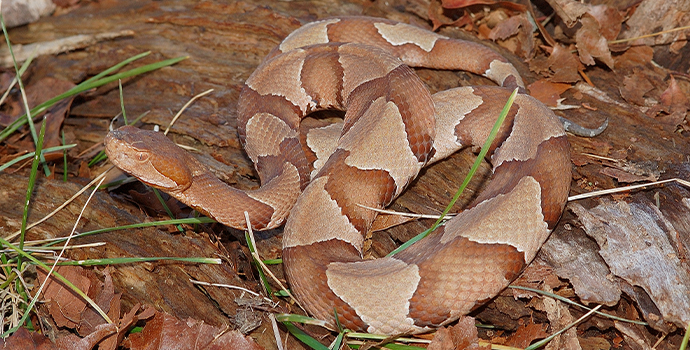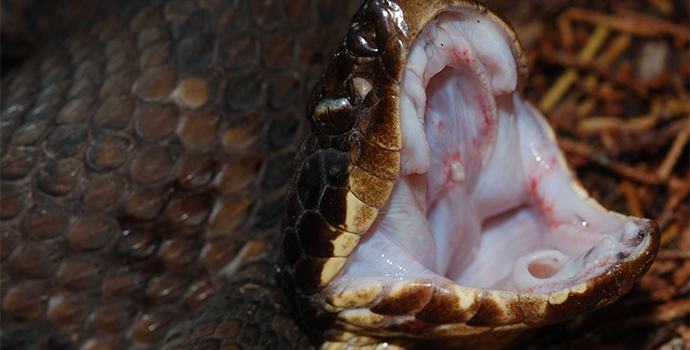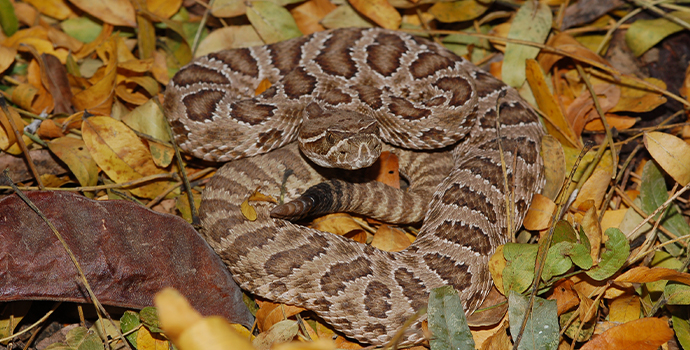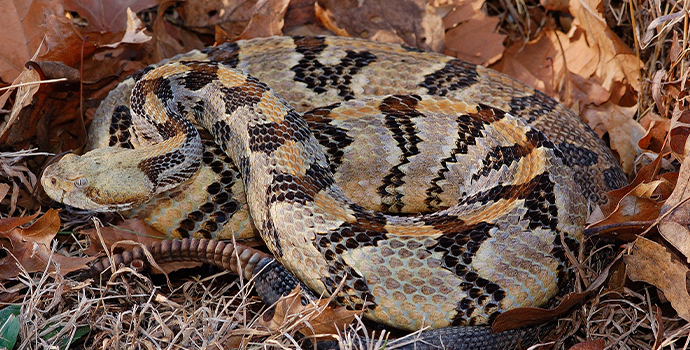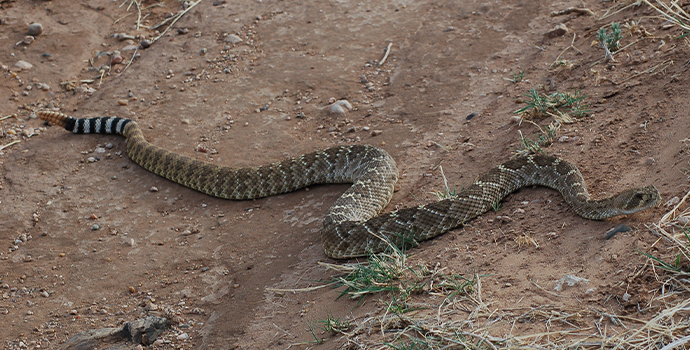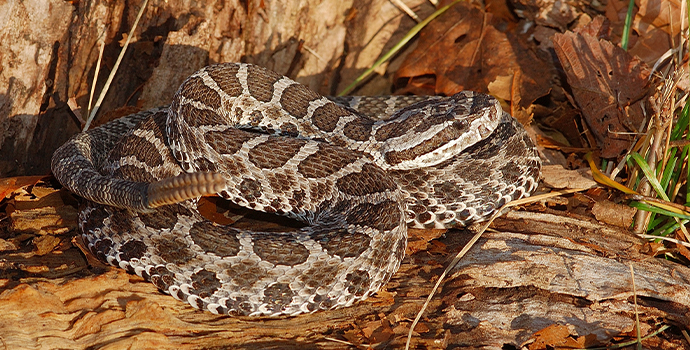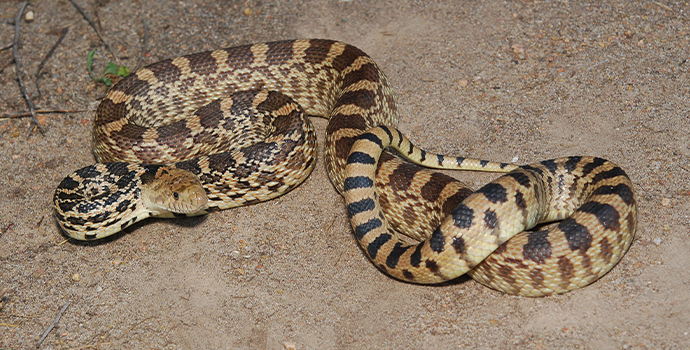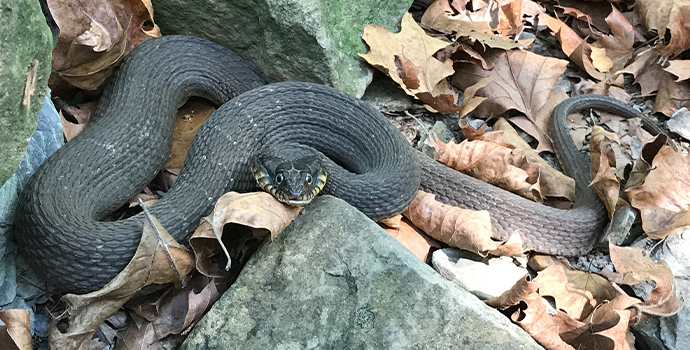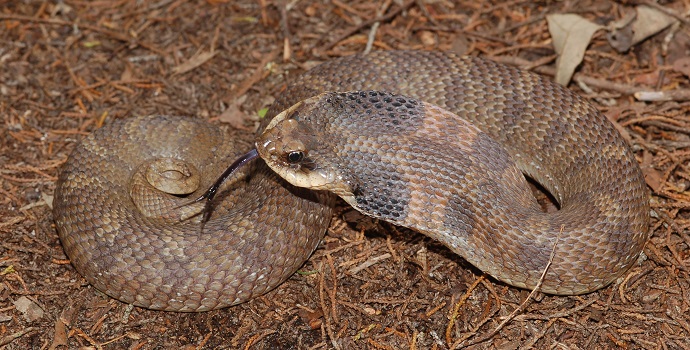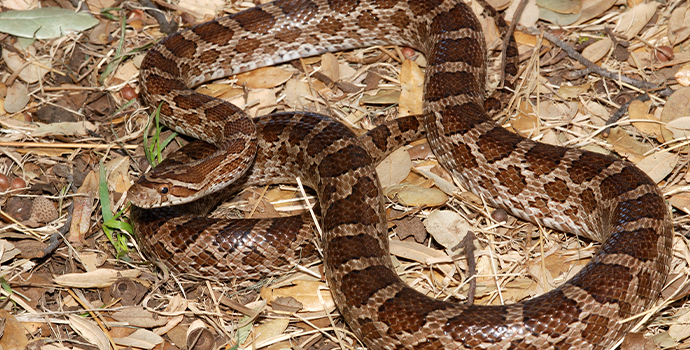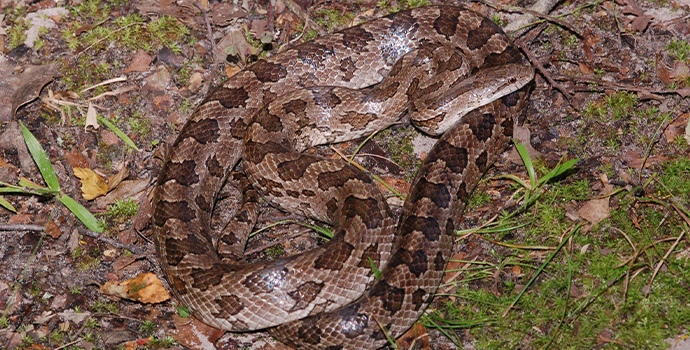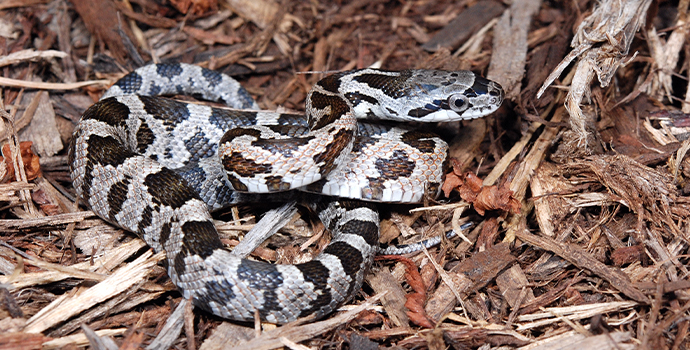Venomous Snakes
How Can I Tell if a Snake is Venomous?
Some of a snake's natural features can help determine if it has venom or not. However, it is safest to consider all snakes as potentially dangerous and walk away.
Snakes with venom (venomous)
- Diamond- or triangle-shaped head
- Elliptical or "cat like" pupils
- Long fangs
- Pits located between the eye and nostril
- May have a rattle
Snakes without venom (harmless)
- Smooth head that is like the body
- Round pupils
- No pits
- No fangs, small rows of teeth
Note: These are general identification tips and don't always apply.
For more information about snake identification, visit KSHerp.com or WebApps.FHSU.edu/KSHerp.
Call the 24-Hour Poison Help Line for Additional Support:
What to Expect if Bitten by a Venomous Snake
Symptoms May Include:
- Immediate and intense pain with rapid swelling
- Bruising of the skin
- A metallic, rubbery or minty taste in the mouth
- Nausea or vomiting
- Numbness or tingling around the mouth, tongue, scalp, feet or bite area
- Trouble breathing
- Signs of shock
Other symptoms that may be caused from the bite or from the fear of being bitten include feeling weak, dizzy, faint or confused.
If Bitten, Do:
- Stay calm
- Seek medical help as soon as possible
- Note the time the bite happened
- Remove jewelry or tight clothing anywhere near the bite site
- Keep the bitten area still, if possible, and raise it to heart level
- Gently wash the area with warm, soapy water
Call the Kansas Poison Center: 1-800-222-1222
If Bitten, Do Not:
- Do not pick up, attempt to trap or kill the snake
- Do not apply a tourniquet or attempt to restrict blood flow to the affected area
- Do not cut the wound
- Do not attempt to suck out the venom
- Do not apply heat, cold, electricity or any substances to the wound
- Do not give alcohol, aspirin or other drugs
